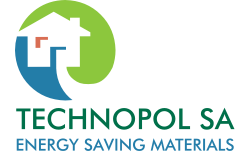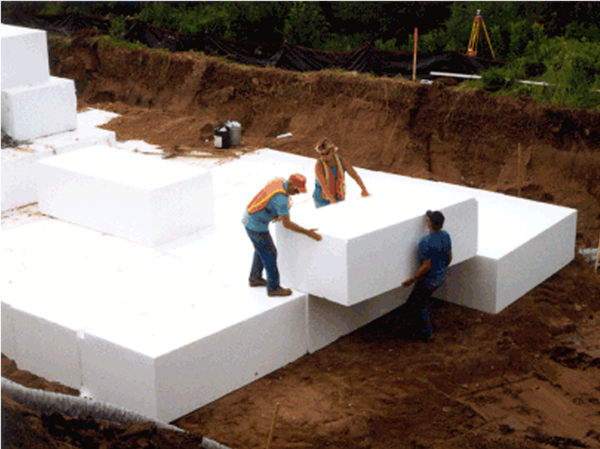Expanded polystyrene (EPS) geofoam has been used as a geotechnical material since the 1960s. EPS geofoam is approximately 1% the weight of soil and less than 10% the weight of other lightweight fill alternatives. As a lightweight fill, EPS geofoam reduces the loads imposed on adjacent and underlying soils and structures.
EPS geofoam is not a general soil fill replacement material, but is intended to solve engineering challenges. The use of EPS typically translates into benefits to construction schedules and lowers the overall cost of construction because it is easy to handle during construction, often without the need for special equipment, and is unaffected by occurring weather conditions. In addition, EPS geofoam can be easily cut and shaped on a project site, which further reduces jobsite challenges.
EPS geofoam is available in numerous material types that can be chosen by the designer for a specific application. Its service life is comparable to other construction materials and it will retain its physical properties under engineered conditions of use. EPS geofoam is produced in blocks that can be cut into various shapes and sizes – and a range of compressive resistances – to suit specific project needs. As an engineered product, it can be produced to obtain the required compressive resistance.
EPS geofoam density, is only about 1% of that of soil and rock, is controlled during the manufacturing process, making it a superior, ultra-lightweight fill material that significantly reduces the stress on underlying subgrades. The lighter load can reduce settlements and can improve stability against bearing and slope failures.
Advantages of using EPS:
EPS consists of 98% air and has long been used as a thermal agent. The insulating ability of EPS makes it an ideal material for energy efficient building products.
- Light weight, easy to transport and install.
- Moisture resistant, increasing water penetration resistance.
- Safe to use. EPS is non-toxic, does not contain CFCs and does not decompose into harmful substances.
- Easy to use; is easily painted using PVA applied by brush or spray. Bonds easily to other materials.
- Extremely cost effective.
- EPS can be moulded, shaped and cut into virtually any shape or pattern.
- EPS is modular and easy to extend.
- Fire retardant. All EPS used in Technopol’s products are fire retardant and will not propagate or contribute to the spread of fire.
- Durability. EPS does not rot or degrade over time, remains dimensionally stable, will remain fully functional for the life of any building

